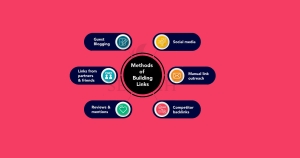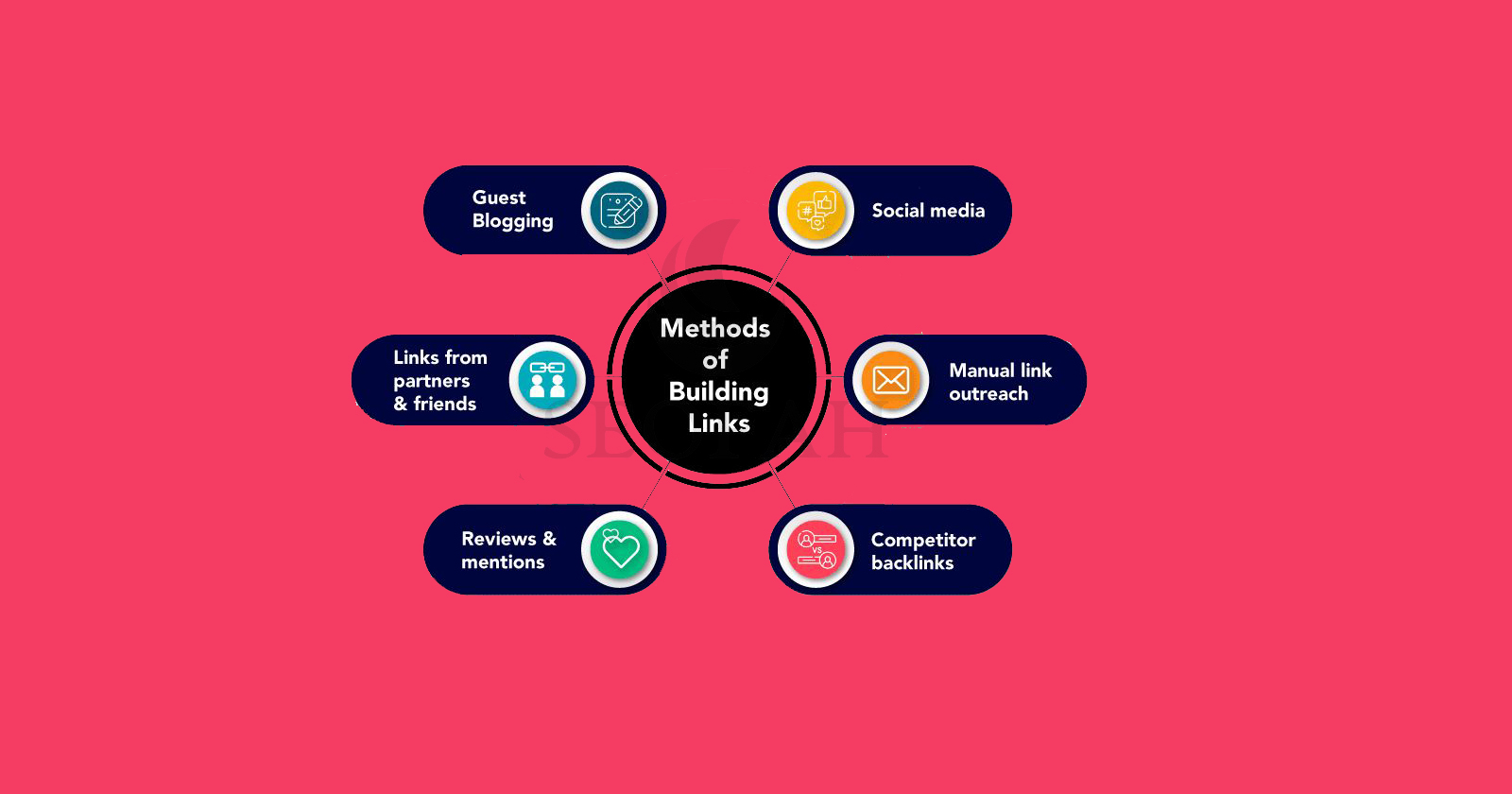In the ever-evolving world of digital marketing, link building remains a cornerstone of a successful SEO strategy. Quality backlinks are essential for driving traffic, increasing domain authority, and improving search engine rankings. This comprehensive guide explores various link building techniques to help you enhance your SEO efforts and stay ahead of the competition.

What is Link Building?
Link buildng is the process of acquirng hyperlinks from other websites to your own. A hyperlnk (or simply a link) is a way for users to navigte between pages on the internet. Search engines use these links to crawl the web and discover new pages. The quality and quantity of backlinks are crucial factors that influence your site’s authority and ranking on search engine results pages (SERPs).
Why is Link Building Important?
- Improves Search Engine Rankings: Search engines, like Google, consider backlinks as votes of confidence. Webstes with more high qualty backlnks tend to rank highr.
- Increases Referral Traffic: Links from high-traffic websites can drive significant referral traffic to your site.
- Enhances Domain Authority: Consistent link building helps improve your website’s domain authority, making it more trusted by search engines.
- Builds Relationships: Link building often involves outreach, which can help build relationships with other websites and influencers in your industry.
- Brand Exposure: Being mentioned and linked to by reputable sites can enhance your brand’s visibility and credibility.
Effective Link Building Techniques
1. Content Creation and Promotion
Creating high-quality, valuable content that others naturally want to link to is one of the most effective link building techniques. This includes:
- Blog Posts: Well-researched, in-depth articles that provide value to readers.
- Infographics: Visual content that presents information in an engaging way.
- Case Studies: Detailed analyses of specific examples or experiments that can serve as valuable resources.
- Guides and Tutorials: Comprehensive guides that offer step-by-step instructions on a particular topic.
Promote your content through social media, email outreach, and other channels to increase visibility and the likelihood of earning backlinks.
2. Guest Blogging
Guest bloging invlves writng articles for other websits in your industry. This stratgy helps you reach a widr audience and earn backlnks from reputable sites. To succeed with guest blogging:
- Identify Relevant Websites: Look for blog and websites in your nche that accept guest posts.
- Pitch Unique Ideas: Propose unique, high-quality content ideas that will appeal to the site’s audience.
- Provide Value: Ensure your guest posts are informative and valuable to readers, increasing the chances of getting published and linked back to your site.
3. Broken Link Building
Broken link building involves finding broken links on other websites, contacting the site owners, and suggesting your content as a replacement. This technique benefits both parties: you gain a backlink, and the site owner fixes a broken link. Steps to follow:
- Identify Broken Links: Use tools like Ahrefs or Check My Links to find broken links on relevant websites.
- Create or Identify Relevant Content: Ensure you have content that fits the context of the broken link.
- Outreach: Contact the webste owner, informing them of the brokn link and suggesting your contnt as a replacement.
4. Skyscraper Technique
The Skyscraper Technique involves finding high-performing content in your niche, creating something even better, and reaching out to those who linked to the original content. Here’s how to implement it:
- Find Popular Content: Use tools like BuzzSumo to identify content that has garnered a lot of backlinks.
- Create Superior Content: Develop more comprehensive, up-to-date, and engaging content than the original.
- Outreach: Reach out to websites that linked to the original content, presenting your improved version and requesting a link.
5. Resource Page Link Building
Resource pages are curated lists of useful links on a particular topic. Getting your site listed on these pages can be a valuable source of backlinks. Steps include:
- Find Resource Pages: Use search queries like “keyword + resource page” or “keyword + inurl
” to locate relevant pages. - Create High-Quality Resources: Ensure your content is valuable and relevant to the resource page.
- Outreach: Contact the website owner, suggesting your content for their resource list.
6. Influencer Outreach
Influencer outreach involves connecting with influencers in your industry and requesting backlinks or mentions. To succeed:
- Identify Influencers: Use tools like BuzzSumo or Followerwonk to find influencers in your niche.
- Build Relationships: Engage with influencers on social media, comment on their posts, and share their content.
- Personalized Outreach: When reaching out, personalize your message and explain how your content can benefit their audience.
7. Testimonials and Reviews
Many businesses feature customer testimonials and reviews on their websites. Offering a testimonial in exchange for a backlink can be a simple yet effective strategy. To implement this:
- Identify Relevant Businesses: Look for companies in your industry that showcase testimonials.
- Offer a Genuine Testimonial: Write a detailed, honest testimonial about their product or service.
- Request a Link: Politely ask for a backlink in return for your testimonial.
8. Competitor Analysis
Analyze your competitors backlnks can provide valuable insghts and opportunites. Use tool likes Ahrfs or SEMrush to:
- Identify Competitors’ Backlinks: See which websites are linking to your competitors.
- Evaluate Link Quality: Assess the quality and relevance of these links.
- Reach Out: Contact the linking websites, presenting your content as a valuable resource.
9. Directory Submissions
Submitting your website to reputable online directories can help you gain backlinks and increase visibility. Focus on:
- Niche Directories: Look for directories specific to your industry.
- High-Quality Directories: Avoid low-quality or spammy directories, as they can harm your SEO.
- Complete Profiles: Ensure your business profile is complete and accurate.
10. Press Releases
Press releases can help you gain media coverage and backlinks from news sites. To maximize their effectiveness:
- Create Newsworthy Content: Ensure your press release covers a newsworthy event or development.
- Target Relevant Media Outlets: Send your press release to journalists and publications that cover your industry.
Optimize for SEO: Include relevnt keywords and links in your prss release.
Advanced Link Building Techniques
11. Link Reclamation
Link reclamation involves finding mentions of your brand or content that haven’t been linked and requesting a link. Steps include:
- Identify Unlinked Mentions: Use tools like Google Alerts or Mention to find mentions of your brand.
- Reach Out: Contact the site owner, thanking them for the mention and requesting a link.
12. HARO (Help A Reporter Out)
HARO connects journalists with sources for their stories. By providing valuable insights, you can earn backlinks from high-authority media sites. Steps to follow:
- Sign Up for HARO: Subscribe to HARO and choose relevant categories.
- Respond to Queries: Provide detailed, expert responses to journalists’ queries.
- Follow Up: If your response is used, follow up to ensure you receive a backlink.
13. Local Link Building
For businesses with a local presence, local link building can be highly effective. Techniques include:
- Local Directories: Submit your business to local directories and chambers of commerce.
- Local Sponsorships: Sponsor local events or charities and request a link on their websites.
- Local Media: Reach out to local newspapers and blogs with newsworthy stories.
14. Edu and Gov Backlinks
Backlinks from educational (.edu) and government (.gov) sites are highly valued due to their authority. Techniques include:
- Scholarships: Offer scholarships and reach out to universities to list them on their scholarship pages.
- Partnerships: Partner with educational or government institutions and request links on their websites.
- Resource Contributions: Provide valuable resources or content that can be linked from these sites.
15. Advanced Content Strategies
Creating highly shareable content can naturally attract backlinks. Advanced content strategies include:
- Original Research: Conduct original studies or surveys and publish the results.
- Interactive Content: Develop interactive tools or calculators.
- Comprehensive Guides: Create in-depth, evergreen content that serves as a go-to resource.
Common Mistakes to Avoid
While link building is crucial for SEO, there are common mistakes that can undermine your efforts:
- Focusing on Quantity Over Quality: Aim for high-quality, relevant backlinks rather than a large number of low-quality links.
- Ignoring Anchor Text: Use diverse, natural-sounding anchor text to avoid appearing manipulative.
- Neglecting Nofollow Links: While nofollow links don’t pass SEO value directly, they can still drive traffic and improve brand visibility.
- Using Black Hat Techniques: Avoid tactics like buying links or using link farms, as these can result in penalties from search engines.
Conclusion
Link building is an essential component of a successful SEO strategy. By employing a variety of link building techniques, you can improve your search engine rankings, drive more traffic, and enhance your online presence. Focus on creating high-quality content, building relationships with other websites, and continuously analyzing and refining your approach to stay ahead in the competitive digital landscape.








[…] posting in SEO (Search Engine Optimization) refrs to the practice of participting in online discussion forums and communties to generate […]